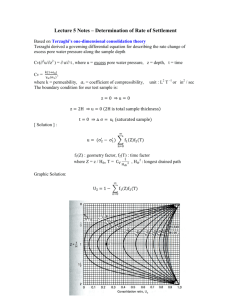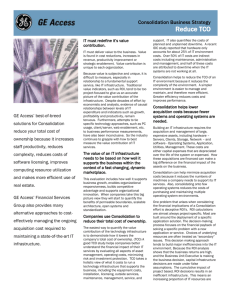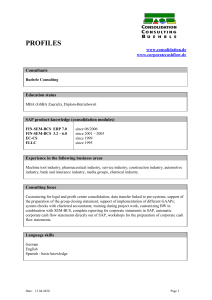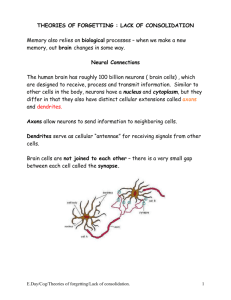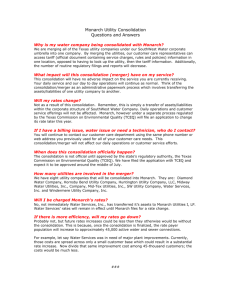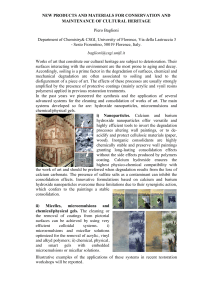Energy Aware Consolidation for Cloud Computing
advertisement
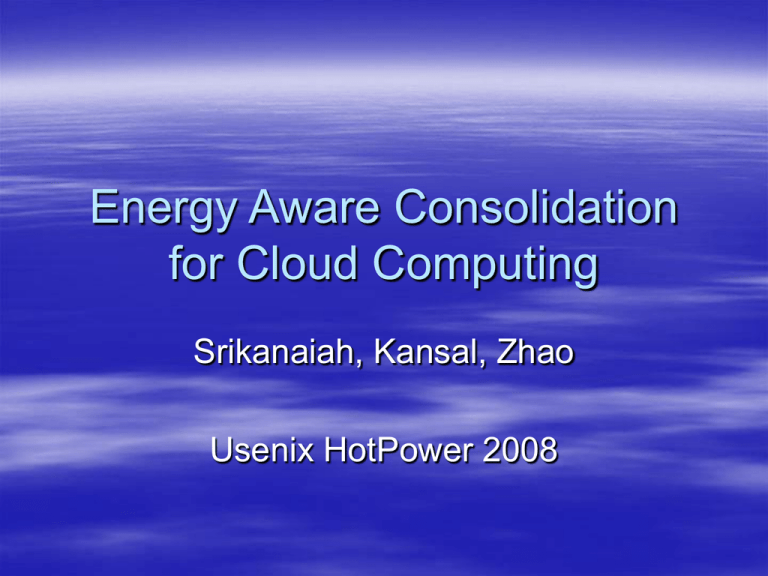
Energy Aware Consolidation for Cloud Computing Srikanaiah, Kansal, Zhao Usenix HotPower 2008 Power & Consolidation Issues High power consumption even at low load (at 10% CPU util, 50% of peak power consumed) Consolidation is not just bin-packing – Packing too much might increase “energy used per unit service provided” – Consolidation can lead to performance degradation – There exists an “optimal” performance vs energy operating point Experiments for Understanding Consolidation Experimental Set up Understanding Consolidation: Experimental Results •Started with app using 10% CPU, 10% disk •Added workloads with varying CPUdisk utils •Numbers show CPU-disk utilization mix •Point made: consolidation results in performance degradation Energy Consumption per transaction U-shaped curve: •At low utilizations idle power is not “amortized effectively” •At high utilizations, energy consumption increases, but throughput degrades hence per tran energy consumption increases •Observation: There is an optimal combination of CPU and disk utils for this setup (70% CPU, 50% disk) Consolidation Problem Why not straightforward multi-dimensional bin-packing – Performance degradation: resource utilizations are additive, but performance measures are not modeled at all in bin-packing. Minimizing number of bins not equal to minimizing energy (implied to mean energy per transaction) – Power variation: even if minimum number of severs is used, the allocation of workloads will result in varying power usage Consolidation Algorithm Algorithm has to do following – Workload “arrives” to host cluster – Arriving workload has known CPU-disk utilization – Arriving workload has to be “assigned” to a host Consolidation Algorithm 1. Optimal point for each host should be known (details not specified!!) Assumes that optimal point is a host characteristic - not dependent on application For a particular allocation, the “Euclidean distance” from the optimal point is calculated Pick allocation which maximizes sum of such Euclidiean distances of each server 2. 3. In authors’ words “This heuristic is based on the intuition that we can use both dimensions of a bin to the fullest (where “full” is defined as the optimal utilization point) after the current allocation is done, if we are left with maximum empty space in each dimension after the allocation.” Consolidation Heuristic Evaluation …Evaluation



